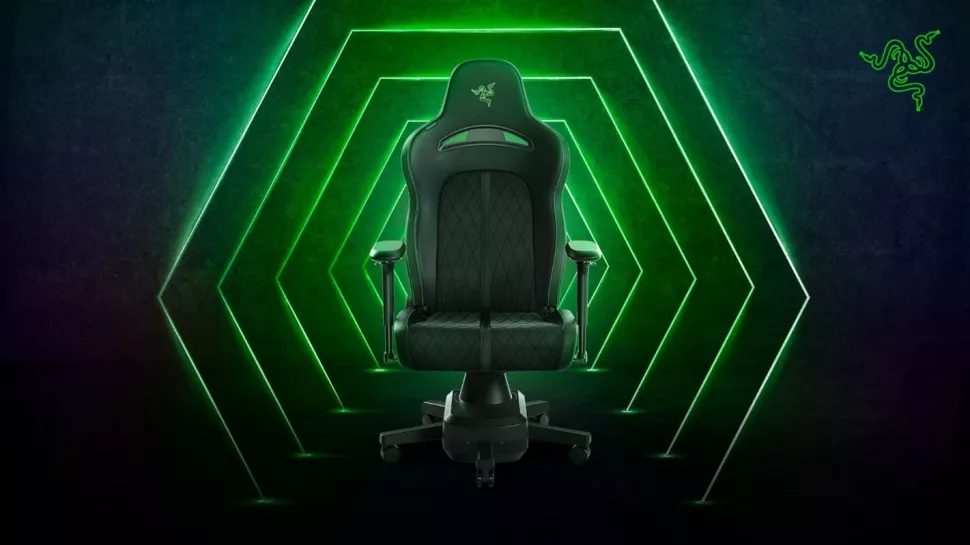Why stop at just one?
Razer was clearly not happy to rest on their laurels this year. Because in addition to Project Sophia, a desk that’ll probably never exist in meatspace, they showed off another concept: the Enki Pro HyperSense.
Granted, Razer already has the Enki Pro on the way, so what’s all the HyperSense stuff about? Well, it takes after last year’s Project Brooklyn, which was a gaming chair that featured a rollable OLED screen, a peripheral tray, (say it with me, now) RGB lighting, andlast but certainly not least, haptic feedback built into the chair.
The Enki Pro HyperSense ditches the rest of Project Brooklyn’s bloat (with the likely exception of the RGB lighting), but keeps the built-in haptic feedback. While it looks little different than their standard Enki, the base houses a large motor. And that motor is, hypothetically, used to send out haptic signals to the upper part of the chair, capable of utilizing different modes depending on whether the occupant is playing a game or listening to music.
Of the two concepts Razer showed off, this is the one most likely to actually happen. And that’s based on the fact that Razer collaborated with D-Box (a haptic technology company), to ensure that over 2,000 games, music tracksand movies would already be programmed into HyperSense. In addition, the system features algorithmic support for haptics on streaming platforms, as well as peripherals such as mice and controllers.
That said, it’s still a concept; it may never actually go into production. But there’s a much higher chance with this than it’s predecessor, Project Brooklyn.
Source: Tom’s Guide

